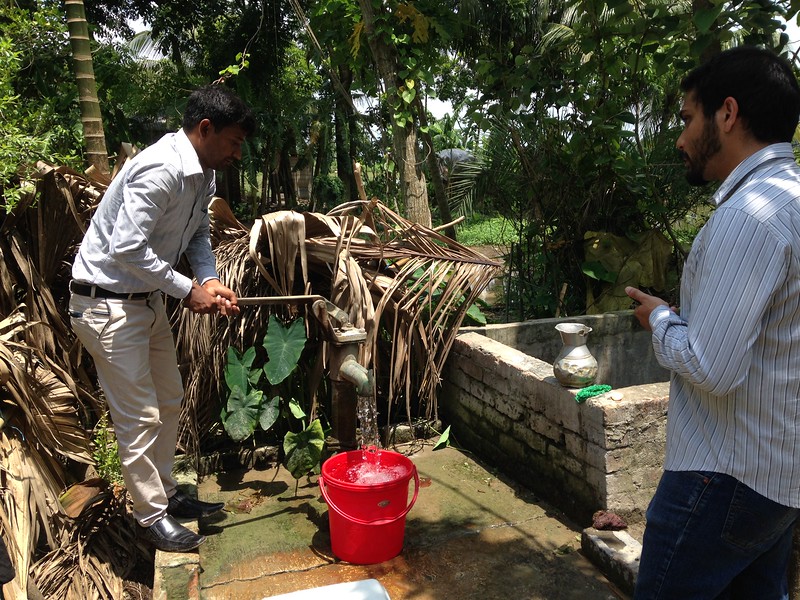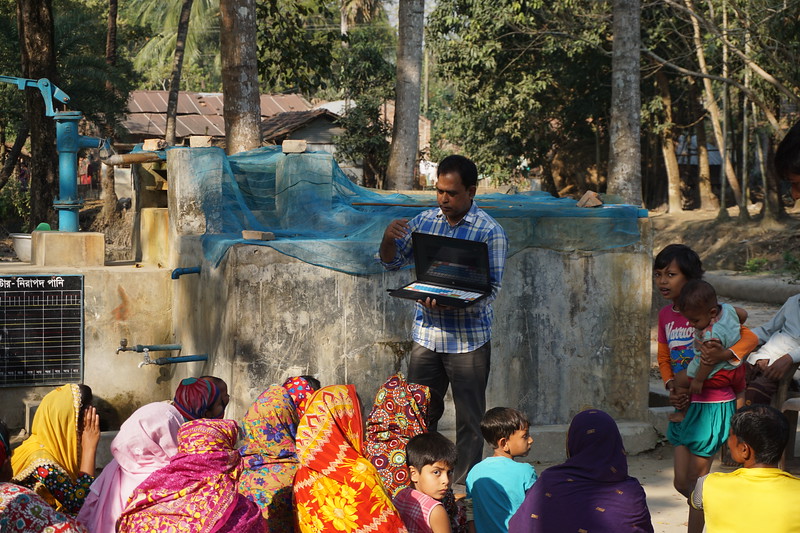
U-M Researchers Examine Ways to Reduce Arsenic Exposure to Bangladesh Residents
Interdisciplinary team used low-cost information campaign to raise awareness of arsenic in water.

Interdisciplinary team used low-cost information campaign to raise awareness of arsenic in water.
The latest issue of the journal PNAS Nexus highlights a study by an interdisciplinary team of U-M CEE, SPH and SEAS researchers and their collaborators at Asia Arsenic Network, Bangladesh. The study was supported by the Graham Sustainability Institute at the University of Michigan. The study examines how to mitigate arsenic contamination of drinking water in Bangladesh. It finds that a low-cost information campaign raises awareness of arsenic in water and leads to behavior changes that reduce consumption of arsenic-contaminated water by rural residents.

Ensuring safe drinking water is a significant challenge in Bangladesh. More than 30 million Bangladesh residents drink water with unacceptable levels of arsenic. One strategy the country has adopted since the early 2000s is to install tube wells that draw water from deeper uncontaminated aquifers. Another has been to deploy arsenic-removing water treatment systems. However, challenges associated with the monitoring, ownership and maintenance limit the long-term sustainability of these approaches. As a result, much of the country still lacks access to safe drinking water. The majority of Bangladeshis rely on shallow private wells. Less than 12 percent of the population uses piped water. Mass testing and information campaigns in the early 2000s helped increase awareness of arsenic contamination. Nonetheless, the number of wells in use has doubled since then.
To address this challenge, a team from the University of Michigan and Asia Arsenic Network, a Japan-based non-governmental organization (NGO) with branch offices in Bangladesh, asked: What limits the long-term sustainability of safe water supply systems in Bangladesh, and what interventions can reduce the consumption of arsenic-contaminated water?
The present study investigated the benefit of an inexpensive information intervention using a randomized control trial approach to analyze arsenic exposure for rural residents before and after the intervention. The study finds that the information campaign was effective in reducing arsenic exposure and provides water supply stakeholders a low cost and easily actionable approach for arsenic mitigation.
This project began in 2015 with a $300,000 Integrated Assessment Grant from the Graham Institute. CEE Professor Lut Raskin recalls, “The collaboration with Asia Arsenic Network goes back to around 2012. At that time, U-M CEE PhD alum Dr. Tara Webster, who was co-advised by now-Emeritus Professor Kim Hayes and me, introduced our team to Asia Arsenic Network. We hosted two Asia Arsenic Network researchers at U-M for a short research visit in 2014 and continued to collaborate with them, eventually resulting in the exciting results presented in this study.”

U-M SEAS Professor Arun Agrawal, one of the coauthors of the study, notes that the findings of the study “have the potential to substantially reduce arsenic poisoning for many Bangladesh residents” and that “these findings result from the hard work of an interdisciplinary research team led by Professor Raskin and U-M CEE PhD alum Dr. Raghav Reddy.”
Based on their research, the team developed recommendations to assist local water supply stakeholders, local and national policy makers, Bangladeshi NGOs, and international donor agencies in addressing concerns regarding the long-term sustainability of safe water access in Bangladesh.
The study focused on 480 households in its baseline survey. Of these, 332 were consuming water with unsafe levels of arsenic. For these 332 households, the research group followed up with a two-phase staggered information campaign including individual water source testing and information about the negative health effects of arsenic. They also suggested alternative safe water sources for the households in each phase of the campaign, according to Dr. Reddy, who noted that on average, arsenic levels fell by 60 percent, with about half of the households changing their drinking water source.
“In addition to having a positive impact, this was a low-cost way to achieve results,” Dr. Reddy said. “The cost was under $10 per household.”

Marketing Communications Specialist
Department of Civil and Environmental Engineering